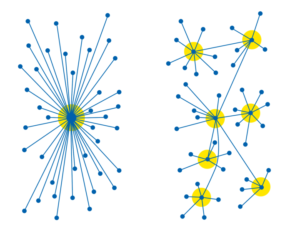
The school year is out, and it can be unsettling to think forward to the Fall and how the education system will playout. Just a few months ago, mid-January marked the start of a new term for nearly 77 million grade school and college students.
As fast as the COVID-19 spread, the education and work environment has shifted just as quickly. Lessons, assignments, and projects have transferred to the remote setting. There is no need to skip class when your classroom fits in your pocket.
As a first-year adjunct professor whose course started in person and moved online, I’ve learned a few accelerated lessons through this pandemic. With 10-years working in a small family business and corporate sales experience while in business school, I’m now full-time into entrepreneurship, cannabis, and education. So, here it is.

- Peer Evaluation is Inspiration. One of the best ways to learn quickly is to get a positive and critical feedback loop from your peers. Your peers are like teammates. You may be competing for the same position, but the greater good is in the accomplishment of the collective effort. There is more value in facilitating dialog in a course than the traditional siloed approach to lecturing at students and assigning work to be submitted in a closed-off, oneway manner. Students now have a more significant opportunity to teach others.
- Expect the Unexpected. As a business leader, the routine expectation is that you present guidance for your direct reports. The hope is the same for students. Setting the right expectation for them is quantifying performance metrics. An unexpected event, like COVID-19, allows you to practice adaptability skills. Your resiliency through change will help overcome any pitfalls when moving in the direction of goals.
- Keep It Simple Systems. Education software and technologies have a wide range. Social media platforms and streaming services offer educational content but are not exclusive to peer-to-peer learning. Making the mistake of using too many platforms can dilute your message. You can keep it simple by optimizing one learning platform and sticking with it.
Future outlook
Post pandemic, the economy will require more teachers and educators. For grade schools and universities, if we hire more teachers than student enrollment can also expand. These educators are to be proficient in technologies that facilitate collaborative and engaging learning environments.
Decentralization is a term used to describe a shift in old systems; for example, electricity is produced centrally by polluting power plants. On the inverse, decentralized electricity production comes through renewables sources. The education system, too, is moving away from a centralized model.

Today’s students report to a central location within districts and cities, yet they have the potential to work on problems with other people on the other side of the world. After COVID hit, I experienced decentralized education as a course facilitator where students can bring their real-world experience into the online course setting. As we practice social distancing and also experience protests after the killing of George Floyd, we need to find innovative ways of inspiration, adaptability while also making simple changes to inform and improve conditions of life.
